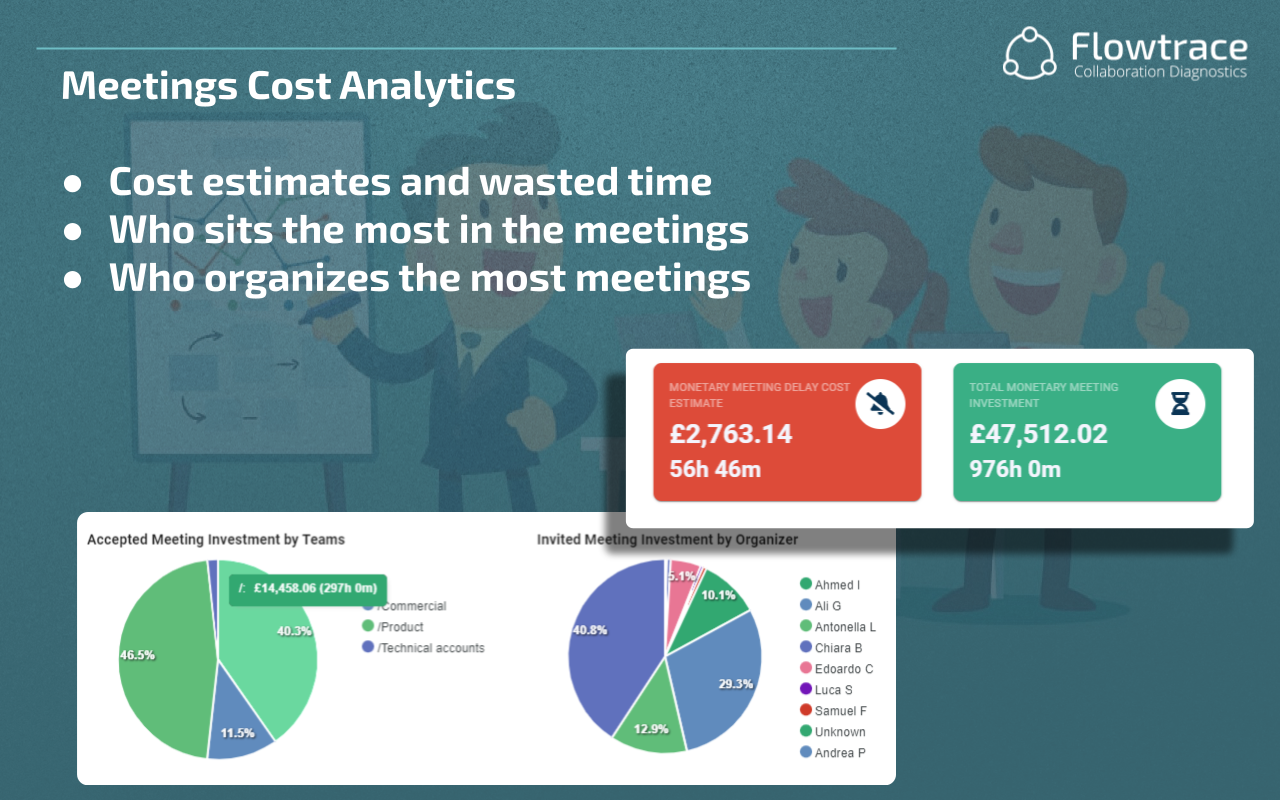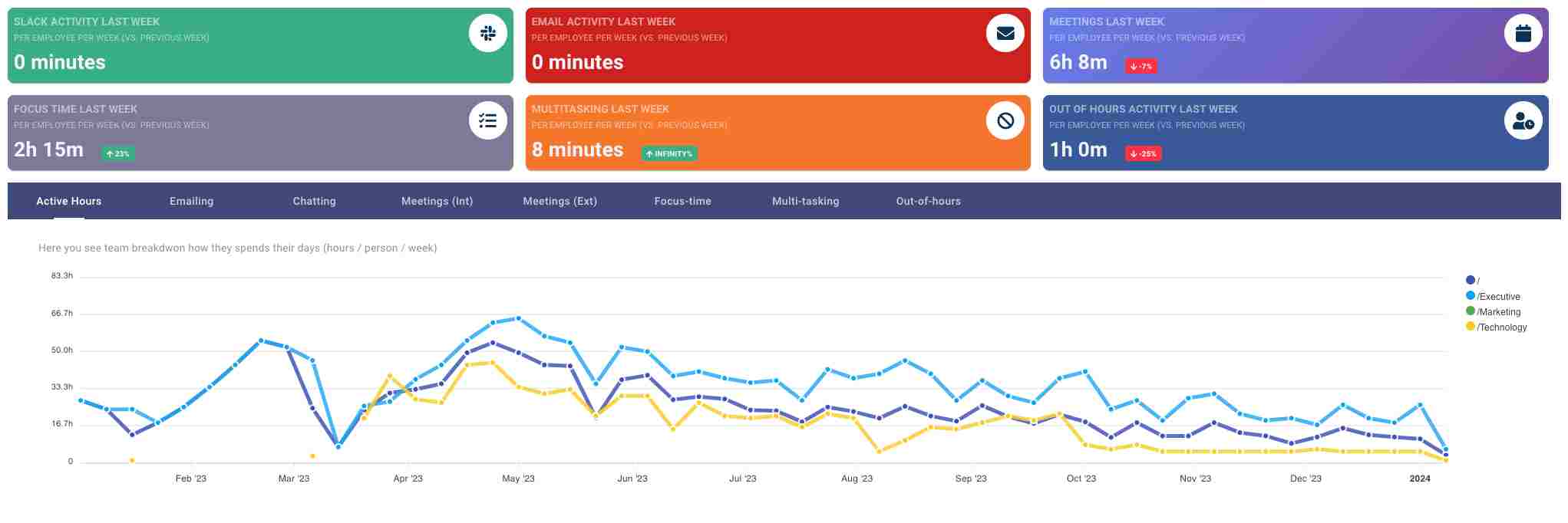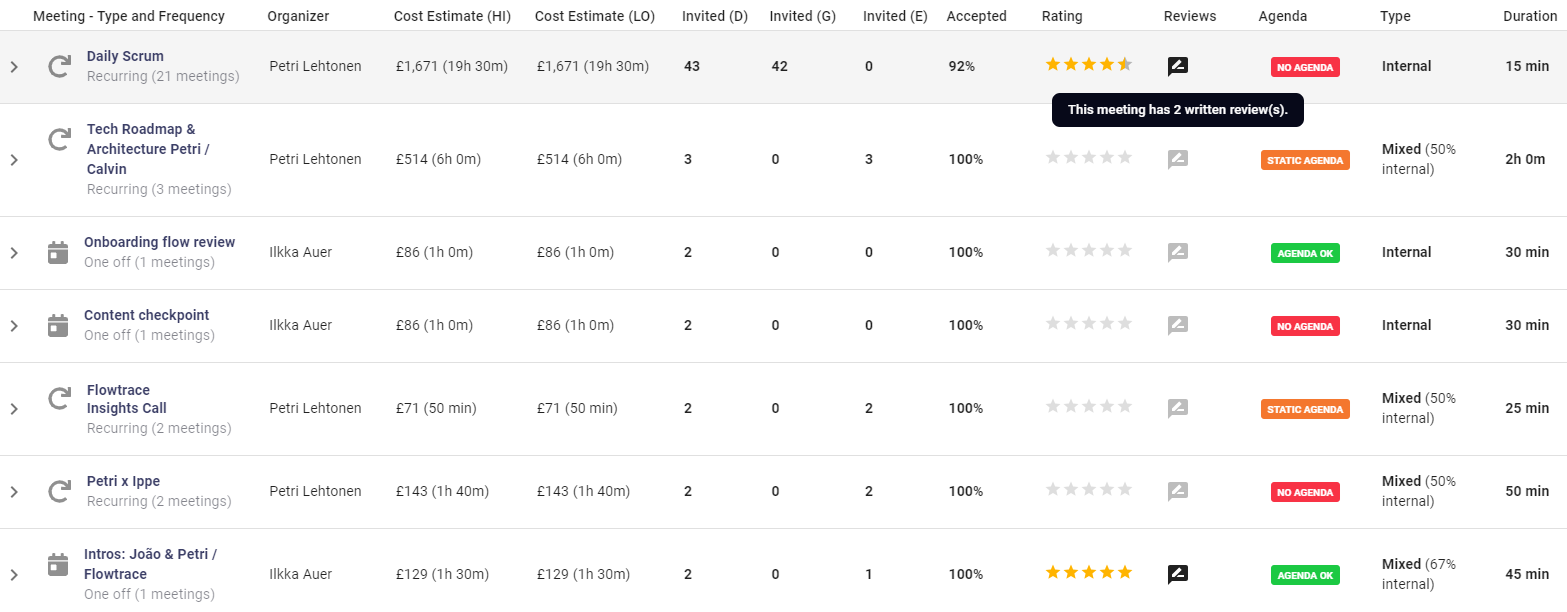Strategic Meeting Management: Implementation & Importance
Enhance productivity and decision-making with strategic meeting management. Learn key components, best practices, and solutions for effective...
Learn how to optimize meeting lengths for maximum productivity and efficiency. Discover the ideal meeting duration, cost implications, and strategies for effective meetings in this comprehensive guide.
Effective meeting length management is essential for maximizing productivity and enhancing employee engagement. Meetings are vital for team collaboration, decision-making, and progress tracking. However, without careful management, meetings can become time-consuming and counterproductive, leading to decision fatigue and a significant dip in day-to-day operational efficiency.
The concept of optimizing meeting length centers on finding the ideal balance between time allocated and objectives achieved. This involves not only reducing unnecessary meeting time to free up resources for critical tasks but also ensuring that meetings are concise enough to keep participants engaged and focused. Optimizing meeting lengths can lead to better decision-making, faster innovation, and increased ability to respond to market changes effectively, making it a key factor in organizational success.
Overly long or unproductive meetings represent a significant drain on both financial resources and employee productivity. These meetings can quickly escalate in cost, consuming valuable time that could otherwise be spent on critical tasks directly contributing to organizational goals.

According to a study by Bain & Company, a single weekly meeting of mid-level managers at a large corporation was costing approximately $15 million annually. This stark figure highlights the enormous financial stakes associated with managing meeting length effectively.
Further research by the Harvard Business Review indicates that ineffective meetings not only waste time but also lead to a significant productivity loss. It was found that executives spend an average of nearly 23 hours per week in meetings, up from less than 10 hours in the 1960s.
The proliferation of meetings and their expanding duration over the years highlights the growing importance of optimizing meeting length to reclaim lost productivity.
These meeting statistics point out the critical need for well-timed meetings. Organizations must strive to minimize the duration of meetings and enhance their effectiveness to prevent substantial financial and indirect costs.
By implementing strategic meeting management practices, companies can significantly reduce the direct and indirect costs associated with lengthy meetings, leading to a more efficient, productive, and financially sound operational model.
Determining the ideal meeting length is vital to maintaining efficiency and ensuring that meetings are productive rather than counterproductive.

According to a study from the University of North Carolina, meetings that last 30 minutes are optimal for maximum engagement. The study indicates that this timeframe is sufficient to cover most topics effectively without losing attendees' attention.
Research published in the Journal of Applied Psychology supports shorter, more frequent meetings as being more effective than longer, less frequent ones. These meetings are shown to help maintain higher levels of energy and engagement among participants.
Several key factors influence the optimal duration of a meeting:
Research and expert opinion generally advocate for shorter meetings to enhance focus and engagement. Studies suggest that the human attention span can begin to wane after about 10-15 minutes of concentrated activity, with a significant drop in engagement after 30 minutes. This is why many productivity experts recommend keeping most meetings between 15-30 minutes whenever feasible.
To implement these findings, companies should:
By understanding and applying these principles, organizations can optimize meeting lengths to improve overall productivity and ensure that every meeting is as efficient and effective as possible. This strategic approach not only conserves time but also contributes significantly to achieving business objectives more swiftly and effectively.
Determining the most effective meeting time involves understanding when your team is most likely to be attentive, engaged, and productive. This timing can significantly impact the efficiency and outcome of the meeting. Here’s a deeper look at how to identify the optimal time for holding meetings.
Participant Energy Levels: Energy levels vary throughout the day and are influenced by natural circadian rhythms. For many people, morning hours are when they are most alert and focused. Scheduling meetings during this time can capitalize on higher energy levels, leading to more dynamic and productive sessions.
Workday Structure: Consider the typical structure of your team's workday. If mornings are usually dedicated to deep work or if there are established quiet hours, disrupting these with a meeting might not be ideal. For such teams, a mid-morning or early afternoon meeting, post-lunch, might be more effective when energy levels start to wane and a change of pace could be beneficial.
Team Availability: Take into account the schedules of all participants. This includes not only their work schedules but also different time zones if you are working with a geographically dispersed team. Utilizing tools like shared calendars can help identify common availability windows.
Type of Meeting: The nature of the meeting also dictates its ideal timing. Strategic planning or brainstorming sessions might be best held when participants are freshest, while status updates might fit better into less critical times of the day.
Studies suggest that mid-morning, particularly around 10 AM, is generally the best time to schedule meetings. At this time, employees have had enough time to settle into their day but are not yet nearing the mental fatigue that can come in the afternoon. Additionally, Tuesday is often cited as the best day of the week for meetings, as Monday is usually a catch-up day for many, and the rest of the week may see declining attention spans as people start to focus on the weekend.
The duration of meetings can have a profound effect on team dynamics and overall productivity. Optimal meeting lengths can enhance team cohesion and facilitate better communication, whereas meetings that are excessively long can lead to fatigue, decreased attentiveness, and a drop in morale.

When meetings are concise and well-structured, team members often feel more respected and valued, knowing that their time is being used efficiently. This respect for individual time and workload can increase the willingness of team members to participate actively and contribute meaningfully during the meetings.
Finding the right balance between the time needed to effectively cover all agenda items and avoiding overly lengthy sessions that lead to diminished returns is crucial. Meetings need to be long enough to allow for comprehensive discussion, decision-making, and clarification of action items.
However, extending a meeting beyond the point where participants remain engaged and focused can counteract productivity. This is often seen in meetings where after a certain point, discussions become repetitive, decision-making slows, and the overall energy in the room declines.

Regularly soliciting meeting feedback from participants about the effectiveness of meeting lengths can provide valuable insights into how well the current strategies are working. This feedback can help identify if the meetings are too long, too short, or just right. Adjustments should then be made based on this feedback to continually improve the meeting process and its impact on team performance.
By thoughtfully managing meeting lengths and maintaining an active focus on productivity, organizations can foster better team dynamics, enhance job satisfaction, and achieve more in less time.
Shorter meetings can lead to increased focus, enhanced decision-making efficiency, and better use of time across the organization. Here are some strategies to implement shorter meetings effectively:

While the benefits of shorter meetings are clear, implementing this change can come with its own set of challenges:
To overcome these challenges, it's important to:
By carefully planning and managing the transition to shorter meetings, organizations can enhance overall efficiency while minimizing the potential drawbacks of this change.
Flowtrace provides detailed meeting analytics designed to optimize meeting efficiency by addressing various aspects of meeting management. This data not only helps to track and analyze meeting costs but also offers insights into meeting effectiveness, gather feedback, and support adherence to meeting policies.





By integrating these advanced features, Flowtrace helps organizations streamline meeting practices, ensuring that each meeting is as productive and cost-effective as possible. This strategic approach to meeting management not only enhances day-to-day operations but also contributes to long-term organizational success.
Optimizing meeting length is essential not only for reducing costs but also for boosting overall employee satisfaction and productivity. Effective meeting management ensures that meetings are concise and purposeful, which respects employees' time and contributes to a more positive workplace atmosphere. When meetings are efficiently managed, they can become powerful tools for collaboration rather than drains on morale and resources.
Flowtrace’s meeting analytics and management tools offers invaluable insights into meeting practices, helping leaders make informed decisions that optimize meeting lengths and formats. By embracing these technologies, upper management can lead by example, setting a standard for meeting efficiency that permeates the entire organization.
Enhance productivity and decision-making with strategic meeting management. Learn key components, best practices, and solutions for effective...
Discover the power of efficient meetings and how measuring ROI can improve productivity, engagement, and decision-making. Learn how tools like...
Learn how to fix unproductive meetings and enhance organizational productivity with strategic planning, effective meeting practices, and innovative...